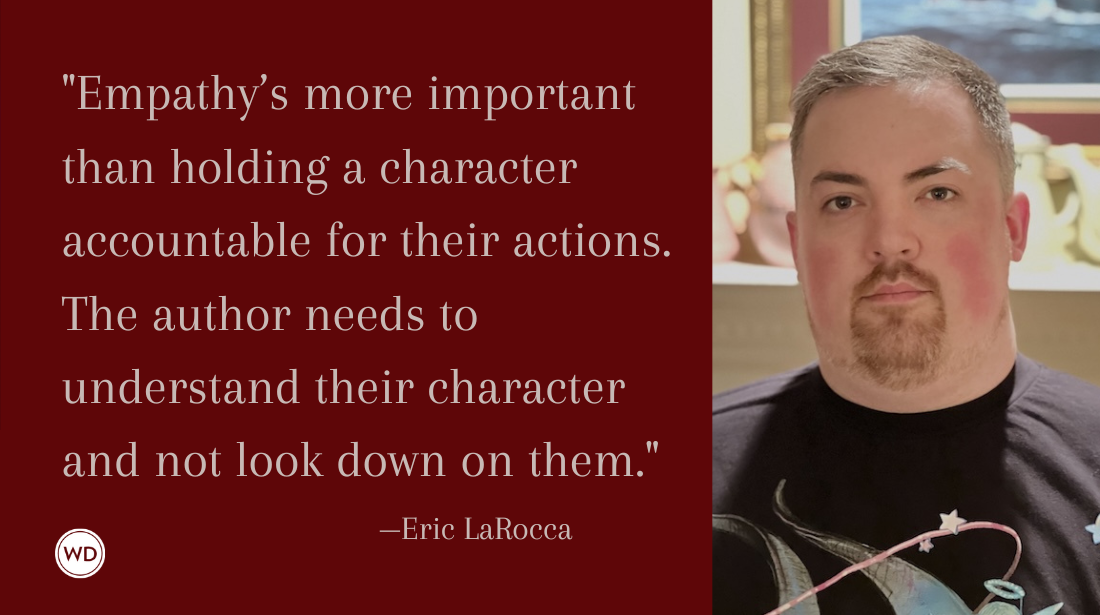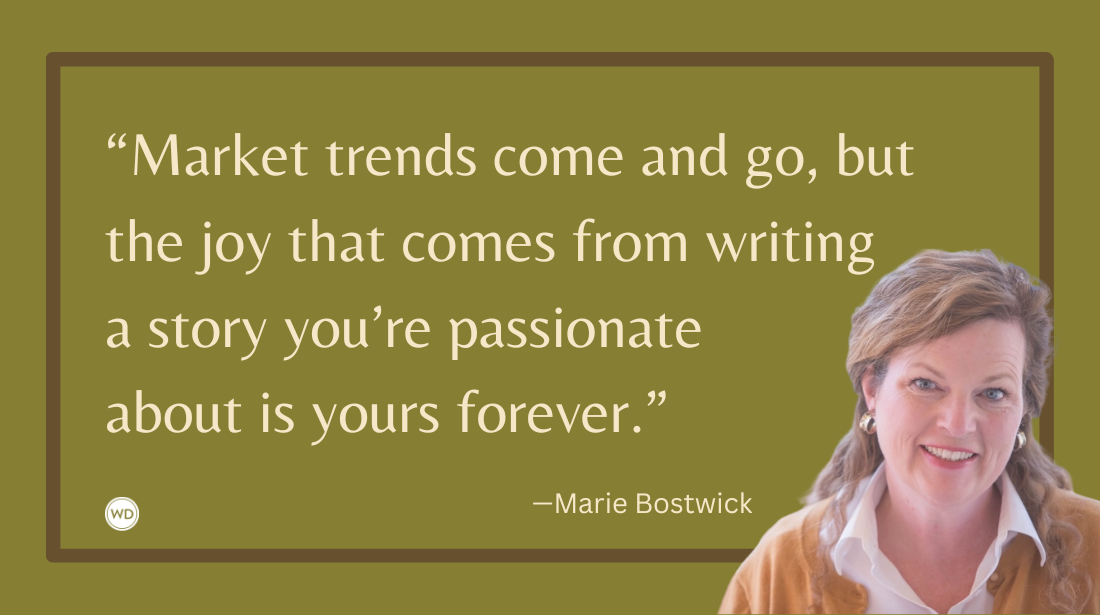Cutter Wood: Find the Thing No One Wants To Talk About
In this interview, author Cutter Wood discusses how the pandemic drove home the importance of the subject around his new nonfction book, Earthly Materials.
Cutter Wood is the author of Love and Death in the Sunshine State. His work has appeared in Harper’s, The Virginia Quarterly Review, The Paris Review Daily, and other publications. He completed an MFA in creative nonfiction at the University of Iowa, is the recipient of fellowships from the National Endowment for the Arts and the Bread Loaf Writers’ Conference, and was the Jenny McKean Moore Writer-in-Residence at George Washington University. He lives in Baltimore with his partner and family. Follow him on X (Twitter), Facebook, and Instagram.
In this interview, Cutter discusses how the pandemic drove home the importance of the subject around his new nonfction book, Earthly Materials, his brief stint as a cult member, and more.
Name: Cutter Wood
Literary agent: PJ Mark
Book title: Earthly Materials
Publisher: Mariner Books
Release date: April 29, 2025
Genre/category: Nonfiction/Science
Previous titles: Love and Death in the Sunshine State
Elevator pitch: From the cutting-edge research being done at MIT’s mucus lab to the mass collection of urine in ancient Rome, Earthly Materials takes readers on a tour of everything that comes out of the human body.
What prompted you to write this book?
In one of the Ramona Quimby books by Beverly Cleary, there’s this amazing moment where Ramona raises her hand during storytime at her school and asks her teacher where people in books go to the bathroom. I was a curious, bookish kid, and this hit me like a thunderbolt. Going to the bathroom is such a basic datum of existence, and yet all these books—whether they were detective tales or love stories or philosophical treatises—acted like it didn’t happen. What was that about? We come to know ourselves through the stories we tell. Why was it so hard to tell stories where the body got its due? It would take 25 years for that little seed of literary curiosity to germinate, but that was the beginning.
How long did it take to go from idea to publication? And did the idea change during the process?
In 2010, I wrote a one-off essay for Harper’s magazine about the history of people saving their own urine. It was a fun piece to research and write. I got to learn all about how the ancient Romans collected urine on street corners and how alchemists tried to make the philosopher’s stone by boiling their own urine. At that time, though, I was in my 20s, trying to establish myself as a writer, and I wanted to write something serious and profound. I convinced myself the subject matter was too frivolous for a book. No one would want to read a book about the materials that come out of the human body, and they especially wouldn’t be interested in a book about how society is often at the mercy of these materials.
Flash forward almost 10 years, and I was a new father. I was changing diapers and wiping noses and drying tears all day long, and it hit me just how inescapable these bodily materials were. It occurred to me that a book about urine and mucus and blood and tears might not just be interesting, it might also be one of the most honest things I could write.
This was late 2019. I put together a proposal fairly quickly and by February of 2020, I’d found a publisher. The strangest thing, though, was what happened next. Within a month, the pandemic hit. While it would dramatically change publishing and much of the research I’d planned to conduct for the book, it also drove home just how pertinent and vital this book was. Suddenly, it didn’t seem so odd at all to believe that society was at the mercy of the body’s emissions and excretions.
Were there any surprises or learning moments in the publishing process for this title?
When we were trying to sell this manuscript to publishers, there were no soft passes. Editors were either immensely intrigued by the concept of the book or immensely uncomfortable. This strange reaction turned out, in and of itself, to be a selling point. If you have a roomful of people and half can’t look and half can’t look away, you’re onto something.
Were there any surprises in the writing process for this book?
This book had more surprises than anything I’ve ever written. There were the surprising details I learned about the biology of the human body. That our mucus actively feeds and cultivates certain behaviors in microbes, for instance, or that menstruation evolved at least four separate times in mammals: These facts fundamentally reshaped my understanding of the human body and its place in society. But there were also the surprises involved in the act of research itself.
Perhaps the most surprising part of the writing process occurred during my brief time as a member of a now-defunct cult in Orlando. This cult used as its sacrament a drug called ayahuasca that causes unimaginably acute nausea and vomiting, and they believed that through unrelenting vomiting, it was possible to commune with spirits beyond our own plane. I didn’t believe that, of course, but I felt if I was going to write about vomit, I should experience it in the most intense form possible.
Not only was I surprised by my utter failure as a cult member—I crashed out in under 24 hours and had to be evacuated by stretcher—but I was floored by my glimpse into the lives of those who had come to ayahuasca as a sort of therapy of last resort. There were veterans suffering from PTSD, addicts struggling with recovery, immigrants trying to find their footing in this country, and countless others dealing with traumas that were less nameable but no less real. They were there to experience some of the worst physical and psychological suffering known, all in the simple hope of making their lives bearable. It was one of those rare moments when you get to peak under the hood of this country, and it was really and truly startling.
What do you hope readers will get out of your book?
As children, one of our first lessons is continence. We learn to use the toilet and blow our noses in tissues and restrain our tears. The end result is that we often convince ourselves the human body is this tidy package. It’s not just that this isn’t true, it’s that when we believe this, we’re missing out on some of the most interesting and important aspects of our own existence. If there’s one thing I want readers to take away from this book, it’s simply that the human body is a mess.
It cries and it sneezes and it urinates and passes gas. Sometimes, these materials are toxic, and sometimes they’re embarrassing, but they’re always a central part of who we are and how we get along in society. There’s nothing more dangerous than taking yourself too seriously, and my hope is that readers of Earthly Materials will be reminded just how amazing and how funny the human body is.
If you could share one piece of advice with other writers, what would it be?
Find the thing no one wants to talk about.
Robert Lee Brewer is Senior Editor of Writer's Digest, which includes managing the content on WritersDigest.com and programming virtual conferences. He's the author of 40 Plot Twist Prompts for Writers: Writing Ideas for Bending Stories in New Directions, The Complete Guide of Poetic Forms: 100+ Poetic Form Definitions and Examples for Poets, Poem-a-Day: 365 Poetry Writing Prompts for a Year of Poeming, and more. Also, he's the editor of Writer's Market, Poet's Market, and Guide to Literary Agents. Follow him on Twitter @robertleebrewer.








